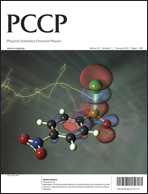Wearable Gold Decorated Direct Laser Writing Graphene for Ultra-Minor Strains
IF 2.9
3区 化学
Q3 CHEMISTRY, PHYSICAL
引用次数: 0
Abstract
This paper reports a flexible and wearable piezoresistive strain sensor composed of LIG/PDMS nanocomposite. LIG was first prepared on commercial Kapton tape by CO2 laser scanning. The presence of carbon atoms and their high ratio compared to oxygen atoms were confirmed using XPS, XRD, and Raman tests. FESEM images also showed the presence of multilayer graphene sheets in a porous foam. The strain sensor was fabricated by transferring LIG to a PDMS elastic polymer substrate. This sensor exhibits high sensitivity (gauge factor in the range of 40 to 80), low hysteresis, and a wide working range. It also has a stable and fast dynamic response and provides good reversibility and repeatability. After 5000 cycles, the signal peak changed only 3%, indicating its long-term durability and stability. Au-enhanced sensors exhibit more regular response patterns than the pure LIG sensor. The gauge factor of 45.8 shows the sensor's high sensitivity at 0.001 strain, which is very high compared to most reported strain sensors. Both Au-enhanced sensors show regular response patterns even under a low strain of 0.1%. In addition to positive SNR numbers at 0.1% strain, the gauge factors of 37.7 and 45.8 were obtained for LIG obtained from Au-coated PI and Au-coated LIG, respectively, that shows both sensors have high sensitivity at deficient strains, which is very high compared to most reported strain sensors. These characteristics make the Au@LIG-based sensor a suitable candidate for measuring minor strains, such as arterial pulse and blood pressure, which have a high potential for use in tactile and wearable sensors. As a result, it is hoped that this LIG-based sensor can be developed into wearable sensor devices or electronic skin.用于超小应变的可穿戴金装饰直接激光写入石墨烯
本文报告了一种由 LIG/PDMS 纳米复合材料组成的柔性可穿戴压阻应变传感器。首先通过 CO2 激光扫描在商用 Kapton 胶带上制备了 LIG。通过 XPS、XRD 和拉曼测试证实了碳原子的存在及其与氧原子的高比例。FESEM 图像也显示多孔泡沫中存在多层石墨烯薄片。应变传感器是通过将石墨烯转移到 PDMS 弹性聚合物基底上制成的。这种传感器具有灵敏度高(测量系数在 40 到 80 之间)、滞后小和工作范围广的特点。它还具有稳定、快速的动态响应,以及良好的可逆性和可重复性。经过 5000 次循环后,信号峰值的变化仅为 3%,这表明它具有长期的耐用性和稳定性。与纯 LIG 传感器相比,金增强传感器的响应模式更有规律。45.8 的测量系数显示了传感器在 0.001 应变时的高灵敏度,这与大多数已报道的应变传感器相比是非常高的。即使在 0.1% 的低应变下,两种金增强传感器也能显示出规则的响应模式。除了在 0.1% 应变时的信噪比为正值外,由金涂层 PI 和金涂层 LIG 制备的 LIG 的量规因子分别为 37.7 和 45.8,这表明这两种传感器在不足应变时都具有很高的灵敏度,与大多数已报道的应变传感器相比都非常高。这些特性使基于 Au@LIG 的传感器成为测量微小应变(如动脉脉搏和血压)的合适候选材料,而微小应变在触觉传感器和可穿戴传感器中具有很大的应用潜力。因此,这种基于 LIG 的传感器有望开发成可穿戴传感设备或电子皮肤。
本文章由计算机程序翻译,如有差异,请以英文原文为准。
求助全文
约1分钟内获得全文
求助全文
来源期刊

Physical Chemistry Chemical Physics
化学-物理:原子、分子和化学物理
CiteScore
5.50
自引率
9.10%
发文量
2675
审稿时长
2.0 months
期刊介绍:
Physical Chemistry Chemical Physics (PCCP) is an international journal co-owned by 19 physical chemistry and physics societies from around the world. This journal publishes original, cutting-edge research in physical chemistry, chemical physics and biophysical chemistry. To be suitable for publication in PCCP, articles must include significant innovation and/or insight into physical chemistry; this is the most important criterion that reviewers and Editors will judge against when evaluating submissions.
The journal has a broad scope and welcomes contributions spanning experiment, theory, computation and data science. Topical coverage includes spectroscopy, dynamics, kinetics, statistical mechanics, thermodynamics, electrochemistry, catalysis, surface science, quantum mechanics, quantum computing and machine learning. Interdisciplinary research areas such as polymers and soft matter, materials, nanoscience, energy, surfaces/interfaces, and biophysical chemistry are welcomed if they demonstrate significant innovation and/or insight into physical chemistry. Joined experimental/theoretical studies are particularly appreciated when complementary and based on up-to-date approaches.
 求助内容:
求助内容: 应助结果提醒方式:
应助结果提醒方式:


